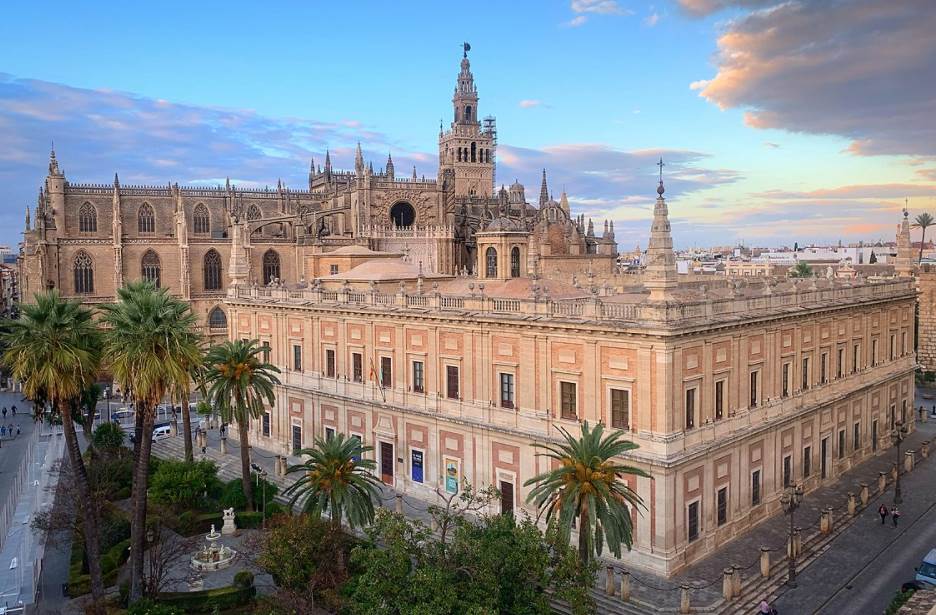The largest city in the Andalusia Region in southern Spain is also its capital. Seville is located on the banks of the River Guadalquivir and with a population of about 1.5 million inhabitants in its metropolitan area, the 4th-largest city in Spain.
The city was originally founded by the Romans as “Hispalis” and was conquered by the Moors in the 8th century until the Christian reconquest of Andalusia in 1248.
This period between the 8th and 13th centuries has defined the architectural landscape of the city, something that is still visible in some of Seville’s most famous landmarks.
Today, Seville is one of the most popular tourist destinations in the country and is visited by millions of people every year.
That’s because this fascinating city has a lot to offer, and in this post, we’ll take a closer at some of the most famous buildings in Seville so you can add these structures to your Seville bucket list.
1. Seville Cathedral
One of the absolute highlights in this sweltering place in southern Spain (at least during the Summer months) is the city’s most important religious building, Seville Cathedral.
It’s the largest Gothic church in the world and the 4th-largest church of any kind in the world. It has a length of 135 meters (443 feet) and a maximum width of 100 meters (330 feet), staggering figures indeed.
The size of the church isn’t the only thing to admire though, because the Gothic architecture is fascinating to watch as well.
What’s even more intriguing about this structure is that it was originally built as the local mosque during the time Seville was part of the Almohad Caliphate in the 12th century.
It ended up being transformed into a church initially in the 13th century and then expanded in the Gothic style between the early 15th century and 1528.
Official website: Seville Cathedral
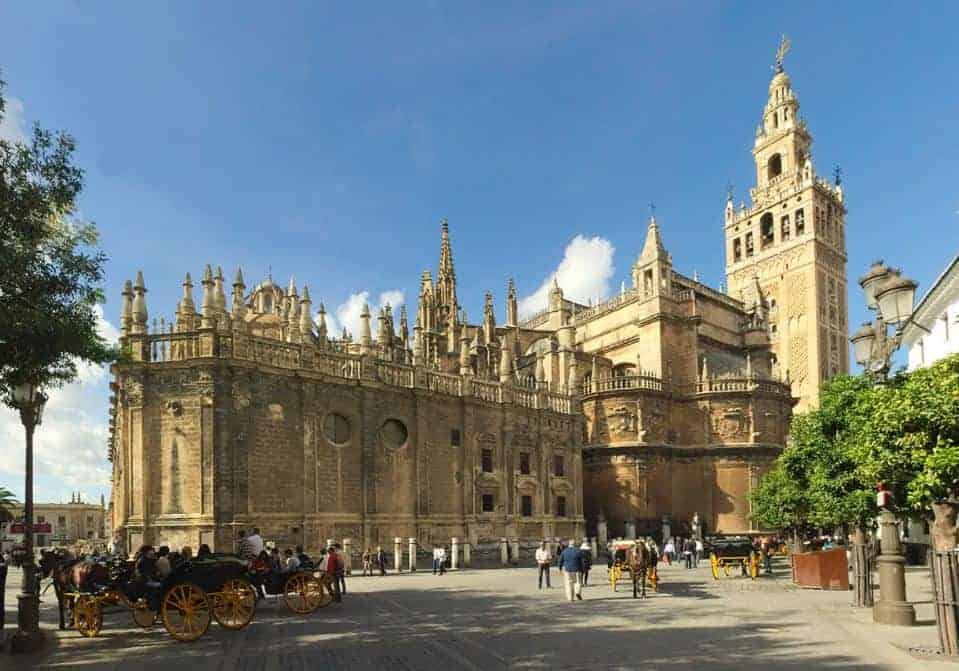
2. La Giralda
Another structure that was transformed from its original purpose is the famous bell tower of Seville Cathedral known as “La Giralda.”
This magnificent structure was originally built as the minaret of the mosque of Seville but was turned into a bell tower after the mosque was transformed into a church.
The tower was made higher and the final piece to be added was the lantern at the top in the typical Renaissance style of the 16th century, topped with a statue known as “El Giraldillo.”
This means the tower now reaches a height of 105 meters (343 feet), making it one of the most prominent buildings in Seville.

3. Royal Alcázar of Seville
Seville Cathedral, the Giralda, along with the General Archive of the Indies and the adjoining Royal Alcázar of Seville are all part of the complex that was designated a UNESCO World Heritage site in 1987.
Similar to the Cathedral and bell tower of the city, the Royal Alcázar was originally constructed as “al-Qasr al-Muriq,” a residential fortress built by the Muslim rulers of Seville in the 11th century.
This initial Muslim structure was destroyed during the Christian Conquest of Seville in 1248 and turned into a royal palace by Christian King Peter of Castille (1334-1369).
What makes this royal palace so special is the fascinating architectural style considered a prime example of Mudéjar architecture.
This style was distinctive for Christian buildings on the Iberian Peninsula between the 13th and 16th centuries.
Even more remarkable is that the upper floors of the palace are still used by the modern-day royal family of Spain when they are in Seville.
Official website: Real Alcázar of Seville
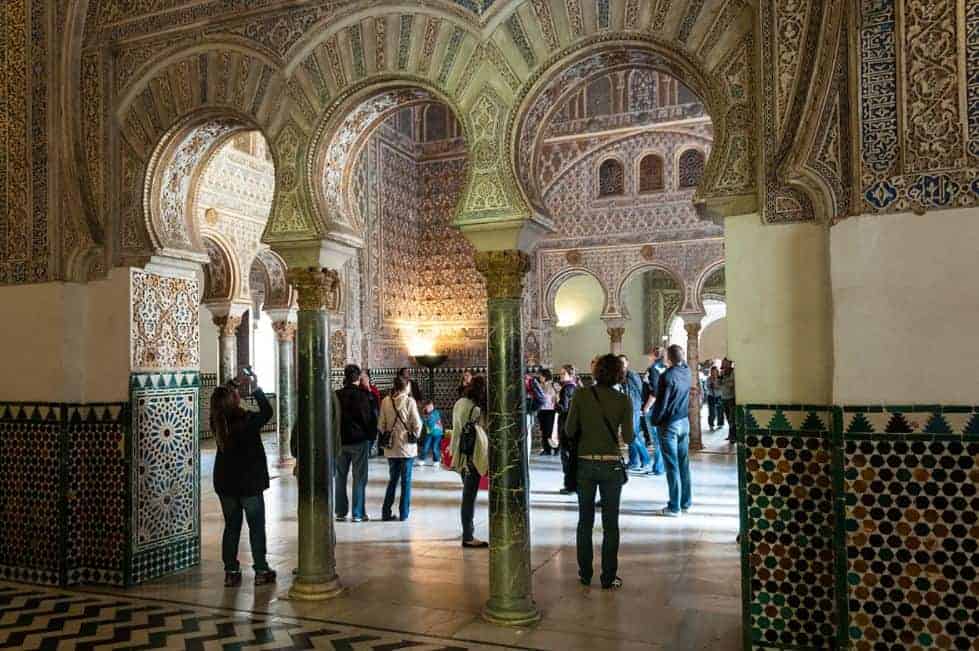
4. Plaza de España
Every city in the world has one or more popular public spaces, and the most famous square in Seville is without a doubt the Plaza de España or “Spain Square.”
This square was built for the Ibero-American Exposition of 1929 and is located within one of the city’s most popular parks, the Parque de María Luisa or “Maria Luisa Park.”
Completed in 1928, the square features a wide range of different architectural styles which have been popular in Spain throughout history.
This means that the buildings were built in a mix of Art Deco, Baroque Revival, Renaissance Revival, and Moorish Revival architectural styles, creating one of the most fascinating ensembles you’ll ever come across.
Today, most of the buildings have been renovated and adjusted to serve as office buildings for government agencies. Along with its practical purpose, the square is a popular place to hang out and relax in the city of Seville.
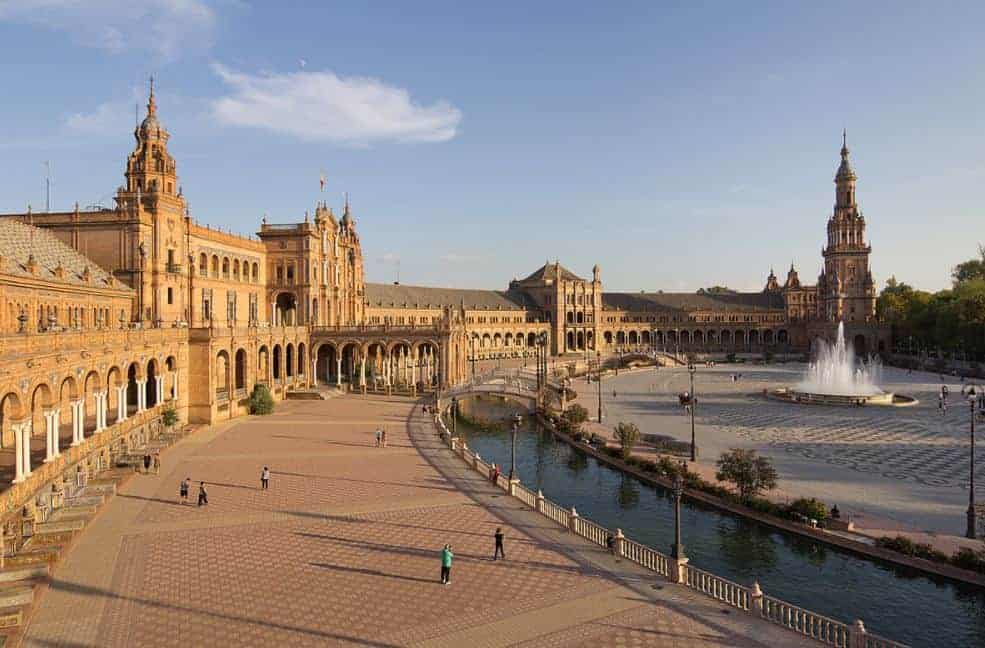
5. Puente de Triana
The city of Seville is located on the banks of the River Guadalquivir, and multiple canals were built as well. One of these canals is called the Canal de Alfonso XIII and is situated near the city center.
One of the most iconic bridges in Seville crosses this canal and connects the Triana Neighborhood with the center of the city.
Therefore, this bridge is referred to as the “Puente de Triana” or “Triana Bridge.” Another name of the bridge is the “Puente de Isabel II.”
The bridge was completed during the reign of Isabella II of Spain (1830-1904), even though the original bridge on this location dates back to the 12th century. Yes, that was also during the Moors’ occupation of Seville.
The best time of the day to explore the area around the bridge (and walk across it) is during the night. Then it’s magnificently illuminated and one of the most picturesque spots in the city emerges.

6. Setas de Sevilla
One of the most fascinating landmarks in the city is considered to be one of the largest wooden structures on the planet.
This attraction is officially called “Metropol Parasol” but is commonly referred to as the “Setas de Sevilla,” which literally translates to “Seville’s Mushrooms.”
This enormous structure was built between 2005 and 2011 and cost an enormous 102 million euros to build.
It has dimensions of 150 by 70 meters (490 by 230 feet) and covers a large part of “La Encarnación Square” in the historical center of the city.
The structure can be accessed, and even though it only stands 26 meters (85 feet) tall, it provides magnificent views of the city, especially during sunset!
Official website: Setas de Sevilla
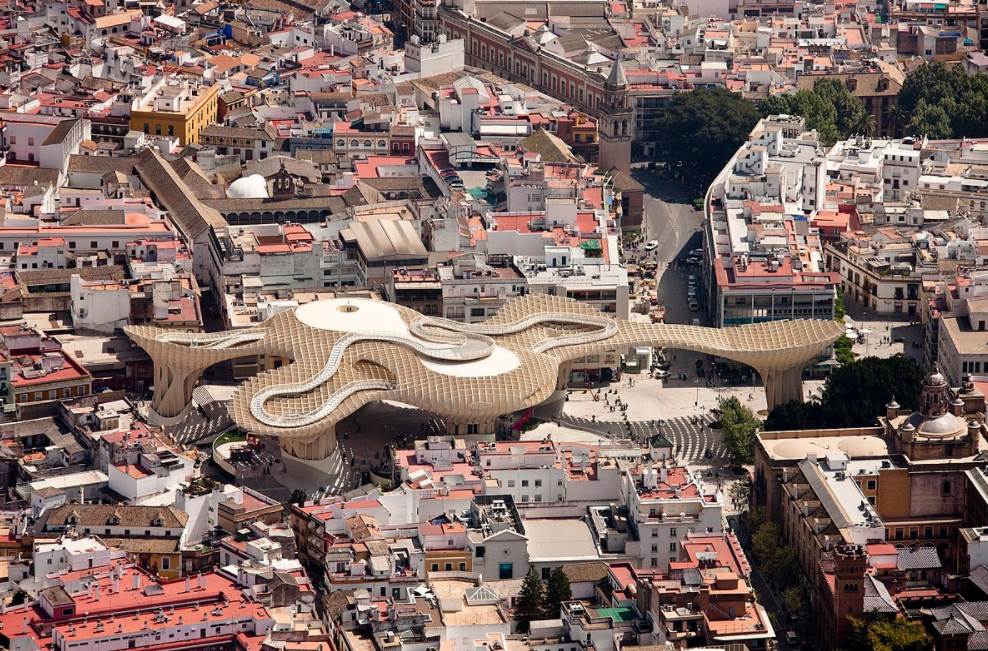
7. Casa de Pilatos
The Casa de Pilates of “Pilate’s House” is one of the most splendid Renaissance buildings in Seville. The construction of the palace started ay back in 1483 and is still the residence of the Dukes of Medinaceli today.
The amazing palace features both Renaissance and Mudéjar architectural elements and is ornamented with over 150 different azulejos, a Spanish glazed tile featuring decorations.
The central courtyard features a fountain and is decorated with busts of ancient Roman Emperors that were excavated from the Roman town of Italica which was located about 9 kilometers (6 miles), from Seville.
Francisco Pacheco, the father-in-law of Diego Velázquez (1599-1660), decorated some of the rooms with frescoes, and a painting by Francisco Goya (1746-128) depicting a bullfight can be admired inside one of the rooms as well.
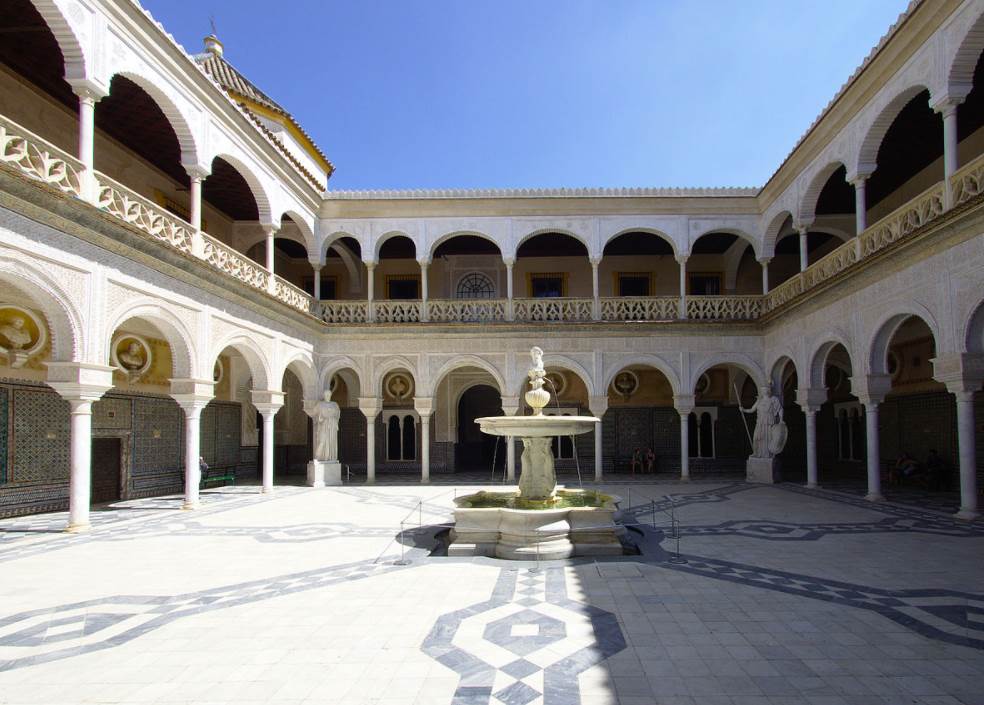
8. Sevilla Tower
Seville isn’t famous for its towering skyscrapers, that’s a fact. There’s only one skyscraper in the city that can be defined as such which is the Sevilla Tower.
This building features 40 floors and reaches a height of 180.5 meters (592 feet). This makes it quite a remarkable sight in a city full of low-rise buildings.
The tower was completed between 2008 and 2015 and was initially referred to as the “Pelli Tower.” That’s because it was designed by renowned Argentinian-American architect César Pelli (1926-2019), the architect of the famous Petronas Towers in Kuala Lumpur.

9. Torre del Oro
The Torre del Oro is a medieval watchtower that was built during the 13th century by the rulers of the Almohad Caliphate.
It was built in 3 phases during the 12th, 14th, and a reconstruction phase of the third level in the 18th century.
It was constructed in a strategic position because it allowed control of all the incoming traffic on the Guadalquivir River. It was also used as a prison during the Middle Ages.
The name of the tower translates to the “Golden Tower” and that’s because of the golden hue it projected on the nearby river. Today, it’s one of the most fascinating historic buildings in Seville.

10. Archivo de Indias
The Archivo de Indias or the “General Archive of the Indies” is a building that holds the archives of the exploits of the Spanish Empire in the Americas and Asia.
It’s housed in the ancient merchants’ exchange building called the “Casa Lonja de Mercaderes.” This is a Renaissance-style building that was designed by Spanish architect Juan de Herrera (1530-1597) in the 16th century.
Juan de Herrera was also the architect of the enormous Escorial and was commissioned to design this building in Seville by King Phillip II of Spain.
The archives of the Council of the Indies have been housed here permanently since 1785. This archive has grown to 9 kilometers of shelves that hold 43,000 volumes and approximately 80 million pages.
